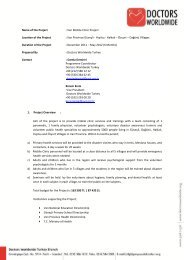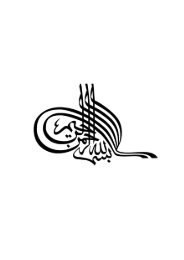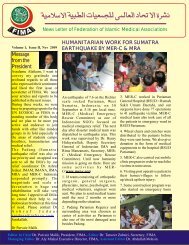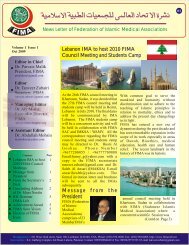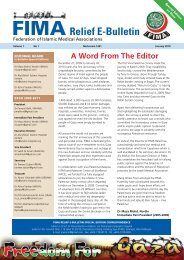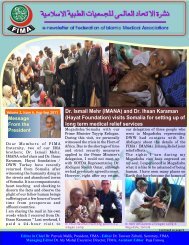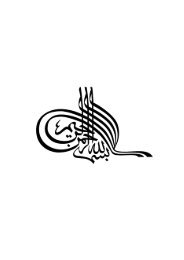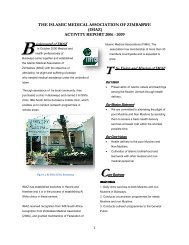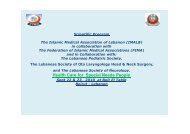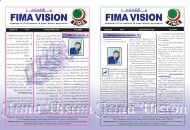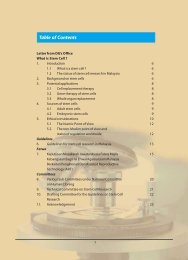FIMA Year Book 2009 - Federation of Islamic Medical Associations
FIMA Year Book 2009 - Federation of Islamic Medical Associations
FIMA Year Book 2009 - Federation of Islamic Medical Associations
Create successful ePaper yourself
Turn your PDF publications into a flip-book with our unique Google optimized e-Paper software.
Problem Based Learninghis immediate family; and strive touse wisdom in all his decisions”. (28)Inculcation <strong>of</strong> principals <strong>of</strong> PBL inIMI is a natural consequence once aneducational system is committed toIMI. IMI demands a basic paradigmchange from conventional teaching <strong>of</strong>medicine. It places the physician in theposition <strong>of</strong> a servant <strong>of</strong> Allah ratherthan the “Godplayer” role assigned tophysicians in the West. Such paradigmor attitude change is possible after theprinciples <strong>of</strong> “Affective or Attitudinal”education are followed.Educational psychologists have drawnon findings from a number <strong>of</strong> studiesto create a series <strong>of</strong> six guidelines foreffective design <strong>of</strong> attitude instruction.The best set <strong>of</strong> guidelines, which is mostfrequently used in adult instruction, isform Simonson and Maushak, (29) . Theseare:1. Make the instruction realistic,relevant, and technically stimulating2. Present new information3. Present persuasive messages in acredible manner4. Elicit purposeful emotionalinvolvement5. Involve the learner in planning,production or delivery <strong>of</strong> the message6. Provide post-instruction discussionor critique opportunitiesA review <strong>of</strong> principles and benefits <strong>of</strong>PBL given earlier in this paper showsthe close concordance <strong>of</strong> PBL strategywith the requirements <strong>of</strong> IMI.Institutional commitment is thefoundation to any educationalintervention. Once an institution <strong>of</strong>medical education is committed toplacing IMI as its main instructionalstrategy, the next step is involvement<strong>of</strong> its faculty and staff in this process<strong>of</strong> change <strong>of</strong> paradigms. A series <strong>of</strong>workshops and interactive sessionsshould be conducted in order to giveeveryone an opportunity to voice theiropinions and have their reservationsaddressed at the outset. The next andmost important step from here onwardsis curricular revision and innovationsneeded to place identified areas <strong>of</strong> IMI tobe integrated with medical curriculum.It is the opinion <strong>of</strong> the author thata SPIRAL integration <strong>of</strong> medicalcurriculum with pre-identified coreareas <strong>of</strong> IMI in tandem with medicalsubjects is the most suitable amongknown designs <strong>of</strong> medical instruction.It is easy to visualize for someone withbasic know-how <strong>of</strong> PBL strategy thatstudents can be asked problems thatdirectly or indirectly address aspects<strong>of</strong> <strong>Islamic</strong> medical ethics or <strong>Islamic</strong>Civilization. PBL packages can bewritten so that participants researchissues related to Shari’ah or Fiqh inorder to understand the trigger problemcompletely.For purpose for further clarification<strong>of</strong> the concept <strong>of</strong> <strong>Islamic</strong> PBL, let usconsider a PBL trigger given students <strong>of</strong>second year medical studies:“You are working as senior medical<strong>of</strong>ficer in a basic health unit in a poorslum area near a big city. On onemorning, you are seeing patients inyour daily OPD when a young woman<strong>FIMA</strong> <strong>Year</strong><strong>Book</strong> <strong>2009</strong>53




